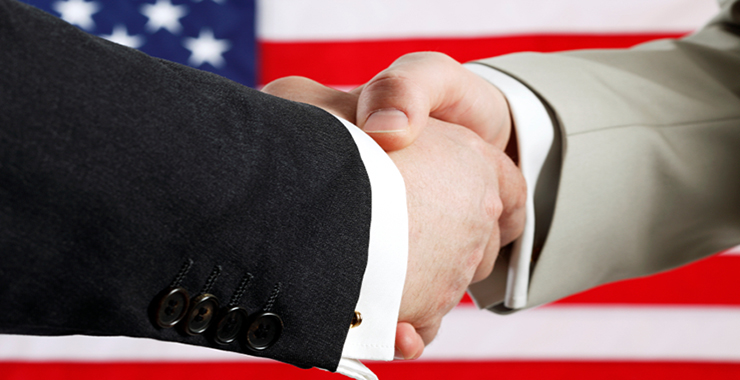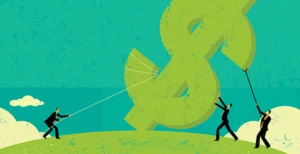
3 Ways Government Customer Service Can Win the Popular Vote
A number of recent polls regarding government customer service show that the general public is feeling more and more like second-class citizens these days. Despite the positive intent of many agencies to raise the bar to match or exceed the customer-centric care of many well-known private sector companies, with a few exceptions, citizens are still not perceiving a positive change.
In Forrester Research’s most recent U.S. government customer experience survey, less than half said that their experiences made them feel like important citizens. Less than half also said that their interactions with government agencies made them feel proud of the United States.
These approval (or disapproval) ratings are similar to the most recent American Customer Satisfaction Index (ACSI) Federal Government Report which saw satisfaction scores for the federal government drop for a second consecutive year to a 64.4 out of 100. Compared to the overall satisfaction scores for more than 40 private sector industries, only internet service providers had a lower overall score.
This isn’t to say that all government customer service is on the decline. In fact, in the same ACSI report, there were a few individual agencies that ranked as well or better than the best of the private sector. In addition, success stories such as BusinessUSA (run by the Small Business Administration and Commerce Department) are showing that it is possible for agencies to transform their service experience to compete with the customer-centric elite.
Stopping the Drop in Approval Ratings
In a recent research note, Forrester Research Senior Analyst Rick Parrish provided the prediction that federal government customer service will turn the corner in a positive way in 2015. Parrish notes that leading federal agencies will finally break out of the repair level of customer experience where they’re simply putting out fires and making fixes, and step up to the elevate level where they start investing in a transformative CX strategy.
And in fact, more than 15 agencies have recently come together to do just that, creating a Customer Service Cross-Agency Priority (CAP) Goal to:
- improve overall government customer interactions
- develop and implement cross-agency standards, best practices and tools
- increase customer feedback and agency transparency
- and to focus on front line staff to empower them to deliver better customer experiences and reward those who consistently do or go above and beyond.
At a recent DGI Government Customer Service Conference, Eric Keller, Program Manager for Research at The Partnership for Public Service encouraged a customer-centered approach to service that simplifies the experience on behalf of the customer, as well as delivers 24/7 service and information online.
Rising to the Top with Customers
What are some ways in which all government agencies can take action to make a positive impact in their customer experience and customer satisfaction ratings?
1. Supply Satisfying Self-Service. Many agencies such as the Social Security Administration have placed a strong focus on improving online information access and delivery, as well as the online customer experience, with mobile-responsive portals that provide forms and answers to frequently-asked questions, 24/7.
2. Empower Agents. Giving front line service and support agents equal or better access to answers and information is key not only to improving customer satisfaction through first contact resolution, but also to consistent service delivery across agents and channels. The same knowledge bases being used to provide self-service to the public can also be used internally to train and equip staff with the information they need to better serve citizens across all channels from phone to social media to live chat.
3. Gather and Use Customer Feedback. Just like private sector customer service leaders including Amazon.com and Virgin Atlantic, many government agencies are now collecting customer feedback both directly via survey tools and indirectly via social media commentary and using this to drive real-time service and improvements. An Aberdeen Group benchmark report revealed that best-in-class brands and organizations are eight times more likely to increase customer satisfaction and 26 times more likely to increase customer retention than average ones because they maintain better customer relationships through customer feedback.
The people have spoken; they’re ready for more customer-centric government service; and the federal government is investing in more transformative solutions and best practices rather than quick fixes, making them poised to deliver on an come-from-behind customer experience win in 2015.
————-
Watch the Webinar: Transforming Your
Customer Service from Good to Great
In order to garner customer satisfaction and secure long-term loyalty, brands and organizations must be increasingly focused on delivering customer service in line with ever-growing customer expectations. As a result, organizations are looking to transform their customer service operations to meet the needs of today’s digital, mobile, and multitasking customers. In this February 11, 2015 webinar sponsored by Parature, from Microsoft and featuring Forrester Research VP and Principal Analyst Kate Leggett
Learn about:
- Changing consumer expectations for customer service, and how these changing expectations put pressure on today’s customer service organization
- How better customer experiences can be quantified, and the economic importance of keeping your customers loyal
- Forrester’s top trends for customer service, and how these trends will transform customer service operations
- How to measure the success of your customer service operations
- Laying the CRM foundation to turn your customer service from good to great
Speakers:
Kate Leggett | VP, Principal Analyst | Forrester
Matt Kresch | Director of Product Marketing | Microsoft
Greg Moser | Customer Care Practice Director | PowerObjects



